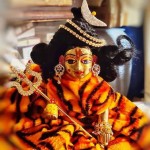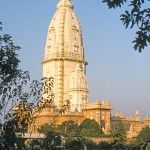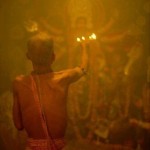Preface: A Celestial Dawn in Varanasi
On the auspicious occasion of Janmashtami 2024, a new chapter in religious history was written in the holy city of Varanasi, where spirituality and tradition are woven into the fabric of daily life. The venerable Kashi Vishwanath Temple (KVT), a representation of unending adoration for Lord Shiva, brought forth a novel custom that has won over millions of hearts. In a ceremony that brought together two of the most revered characters in Hindu mythology, the temple brought together Lord Vishweshwar, the presiding deity in the form of a Shivalinga, and Laddu Gopal, the child form of Lord Krishna, for the first time in its illustrious history.
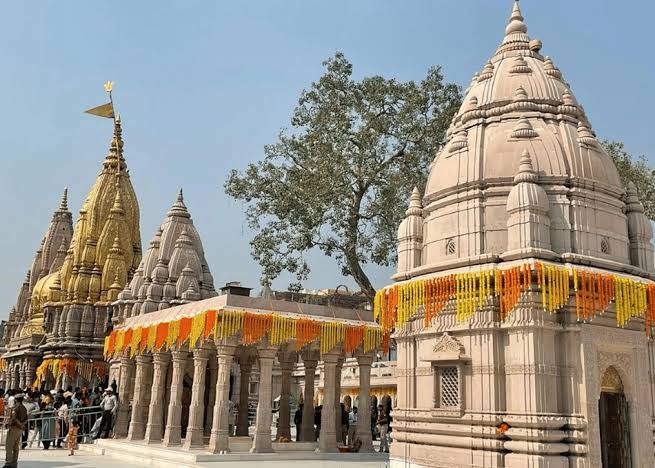
Witnessed by thousands in person and via live streaming, this momentous event signaled the start of a new tradition at Kashi Vishwanath Dham that is sure to strike a deep chord with devotees for many generations to come.
The Worth of Kashi Vishwanath Temple in History
One of the twelve Jyotirlingas, the Kashi Vishwanath Temple, is particularly sacred to millions of Hindus all over the world. This historic temple, which is situated on the western bank of the sacred Ganges, has long been a source of devotion and spiritual force. The temple, which is devoted to Lord Shiva, has seen innumerable rites, ceremonies, and festivities, all of which have great religious significance. An additional dimension to the rich history of the temple has been added with the introduction of the new custom that links Laddu Gopal and Lord Vishweshwar.
Lord Shiva, sometimes referred to as Vishweshwar or the Lord of the Universe, is regarded as the personification of cosmic consciousness and the destroyer of evil. His presence is a source of great spiritual force in Varanasi, a city that is thought to have been blessed by the gods themselves. The Kashi Vishwanath Temple attracts devotees from all over the world who come to seek Lord Shiva's blessings, meditate in the hallowed areas, and become fully enveloped in the spiritual aura that permeates the entire place.
Janmashtami: The Festival of the Birth of Lord Krishna
The Hindu celebration of Janmashtami, which commemorates the birth of Lord Krishna, is one of the most important and popular holidays. Hindu mythology states that in order to defeat evil and establish dharma (good), Lord Krishna, the eighth incarnation of Lord Vishnu, was born during the Dwapara Yuga. Millions of people are still inspired by his life and teachings, which are detailed in the Bhagavad Gita and other holy writings.
Joyful celebrations of Janmashtami include fasting, singing devotional hymns, and staging Krishna Leelas, or enactments of the different incidents in Krishna's life. The event culminates in the ceremonial adoration of Lord Krishna's child form, Laddu Gopal, at midnight, which is thought to be the hour of Krishna's birth. This year, the Kashi Vishwanath Temple gave the festivities an extra twist by inviting Laddu Gopal to take part in the Mangla Aarti, the morning ritual, inside the Garbhgriha, the temple's sanctum sanctorum.
The Beginning of a New Tradition: Bringing Laddu Gopal and Lord Vishweshwar Together
The aim to represent the unification of all facets of the divine was the driving force behind the choice to combine Lord Vishweshwar and Laddu Gopal in a single rite. Laddu Gopal, who embodies the loving and carefree nature of Krishna, and Lord Vishweshwar, who represents the cosmic and all-encompassing nature of Shiva, were brought together in a ritual that demonstrated the profound interconnectivity of all celestial forms.
The new custom started with a lavish Janmashtami celebration at Mandir Chowk, a well-known location inside the Kashi Vishwanath Dham. A captivating rendition of Krishna Leela by performers from Barsana, Mathura—a location inextricably related to Krishna's life—was part of the celebrations. The painters presented childhood moments of Krishna while clothed in traditional attire, inspiring a sense of heavenly playfulness and joy among the gathered followers.
At midnight, the time of Lord Krishna's birth, the atmosphere in the temple became charged with spiritual force. As hundreds of worshippers, priests, and temple officials assembled to take part in the rites, their voices rose in unison as they shouted bhajans, or devotional songs, honoring Krishna. Laddu Gopal's birth ritual was carried out with great devotion, with the idol being cleansed, dressed in new garments and jewelry, and put in a gorgeously decorated cradle.

After the birth ritual, Laddu Gopal was placed in a palanquin and led in a procession throughout the temple compound, known as a shobhayatra (parade). The sound of traditional musical instruments and the chanting of "Jai Shri Krishna" from the devotees accompanied the palanquin as it walked gently past the crowd, decked with lights and flowers. At the Satyanarain temple in the Kashi Vishwanath Dham, where Laddu Gopal was ritually put to sleep, the shobhayatra came to an end.
The Daily Ritual of Mandala Aarti
The first ceremony of the day was the temple's Mangla Aarti, which was performed the next morning, just before dawn. Mangla Aarti, which marks the start of a new day in the divine presence and the awakening of the deity, is regarded as one of the most important ceremonies in Hindu temple traditions. This Mangla Aarti was special because Laddu Gopal was there with Lord Vishweshwar during the ceremony for the first time in the Kashi Vishwanath Temple's history.
A divine light seemed to fill the sanctum sanctorum, appearing to transcend the walls of the temple as the priests waved lamps in front of the idols and chanted Vedic hymns. For the devotees in attendance, seeing Laddu Gopal seated next to Lord Vishweshwar's Shivalinga was both profoundly moving and an amazing sight. Together, the two gods, each representing a distinct facet of the divine, stood for the harmony and oneness that are central to Hindu thought.
For the participants, the Mangla Aarti was a profoundly spiritual event in addition to a beautiful display. A great sensation of calm and happiness was experienced by many devotees as they saw Lord Vishweshwar and Laddu Gopal unite. Vishwa Bushan Mishra, the temple's chief executive officer, characterized the occasion as a moment of heavenly splendour that captured the hearts of everyone in attendance.
Technology's Place in the Divine Experience
A Live Broadcast With the advent of modern technology, religious practices have become increasingly reliant on it, enabling followers from all over the world to take part remotely in rites and ceremonies. This trend was welcomed by the Kashi Vishwanath Temple, which ensured that thousands of devotees who could not be physically present could still experience the sacred moment by live-streaming the Mangla Aarti and the entire Janmashtami event.
The temple trust worked hard to enable the live streaming since they understood how important it was to make the ceremony available to a worldwide audience. Devotees from all around India and the world tuned in to watch the historic occasion, and the response was phenomenal. The spiritual experience was expanded and made more comprehensive by the virtual connection to the temple and participation in its ceremonies.
The New Tradition's Spiritual Significance
At Kashi Vishwanath Dham, the adoption of this new custom has great spiritual importance. It is a sign of the peaceful coexistence of many facets of the divine rather than merely a novel ritual. Hinduism views Lord Shiva and Lord Krishna as contrasting routes leading to the same ultimate truth. Krishna, with his loving and carefree demeanor, symbolizes the path of devotion and morality, whereas Shiva, with his austere character, stands for renunciation and meditation. The temple has created a potent symbol of the unification of all paths in the spiritual journey by uniting these two deities in a single rite.
The significance of accepting variation in our spiritual practices and the interdependence of all beings are further reminders provided by this new tradition. The marriage of Lord Vishweshwar and Laddu Gopal at Kashi Vishwanath Temple is a beacon of hope and a cry for togetherness among all people, regardless of their unique ways or beliefs, in a world frequently divided by differences.
Reactions and Experiences of Devotees
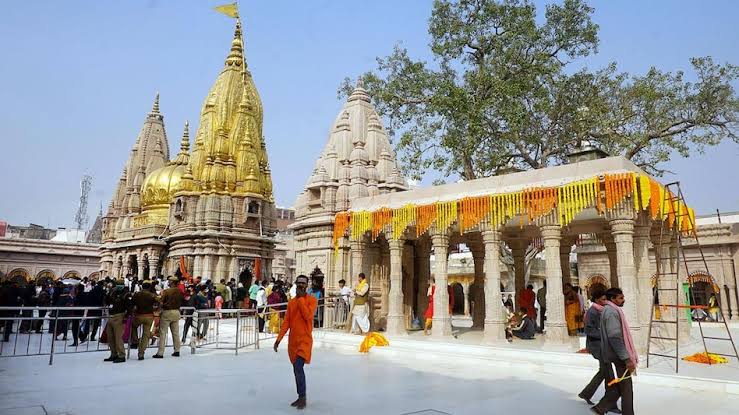
Devotees who attended the Janmashtami ceremony at the Kashi Vishwanath Temple were emotionally touched by the new custom. Many told the temple authorities about their experiences, calling it a once-in-a-lifetime chance to see the merger of two of Hinduism's most cherished deities. For many, the Mangla Aarti held special meaning when they saw Laddu Gopal sitting by Lord Vishweshwar, symbolizing the unification of disparate facets of their faith.
A follower who had come from a far-off town to take part in the festivities called it "divine and transformative." She said that she had never felt such inner calm and spiritual fulfillment as she did when she saw the two goddesses together. A young man from Varanasi who was also a devotee thanked the organizers for live broadcasting the event so that his elderly parents, who were unable to go, could take part in the festivities from their home.







